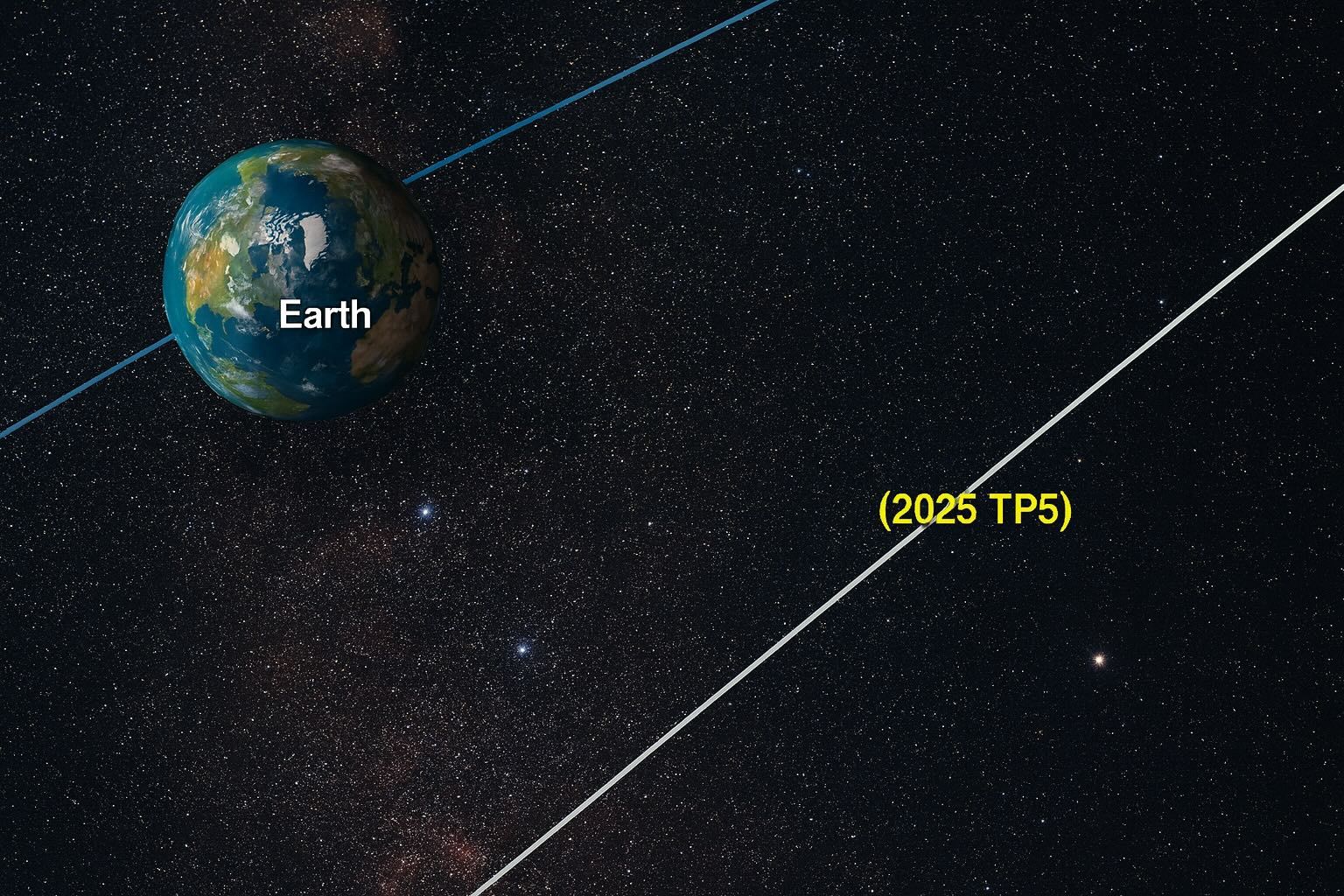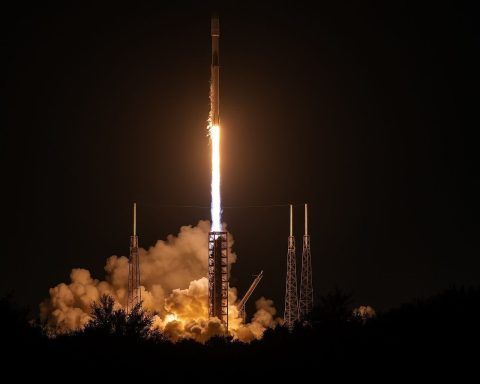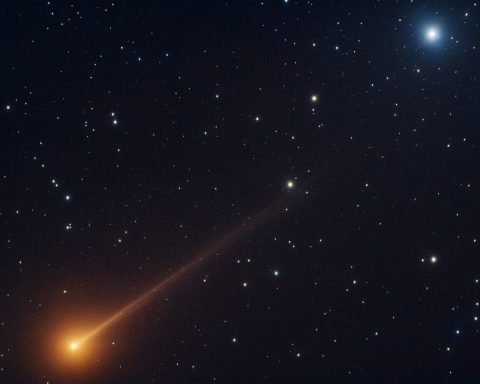- Near-Earth Flyby: Newly found asteroid 2025 TP5 (only discovered Oct. 13, 2025) will pass Earth at ~0.25 lunar distances (≈60,300 miles) at ~20:09 UTC on Oct. 15 [1] [2] – about one-quarter the Moon’s distance.
- Size & Speed: This space rock is roughly 54 feet (16 m) across (similar to the Chelyabinsk meteor) [3]. It will hurtle by at ~8.37 km/s, then pass within ~74,600 miles of the Moon on Oct. 16 [4].
- No Threat: NASA’s Jet Propulsion Lab and the ATLAS survey confirm 2025 TP5 poses no impact danger. By NASA criteria, only asteroids >150 m wide passing within ~4.65 million miles are labeled “potentially hazardous” [5] [6]. Experts stress these small NEAs usually harmlessly disintegrate as meteors [7] [8].
- Detection: ATLAS (a NASA-funded Hawaii telescope array) spotted 2025 TP5 just 2 days before encounter [9]. This rapid discovery shows how modern surveys can catch faint Earth-approachers at the last minute. NASA and ESA databases (Minor Planet Center, JPL CNEOS) will refine its trajectory in real time.
- Earlier Close Calls: This fall has seen multiple close calls. On Oct. 1, tiny asteroid 2025 TF flew just 266 miles over Antarctica (second-closest recorded flyby) [10]. Another small rock, 2025 TQ2, zipped ~3,000 miles above Canada on Oct. 2 [11]. In fact, over 120 asteroids have passed closer than the Moon so far in 2025 (NASA count) [12].
- Market Buzz: Space industry stocks are reacting. For example, Intuitive Machines (LUNR) – a company behind recent U.S. moon landers – saw its shares surge about 16% on Oct. 14 amid Artemis/space news [13]. Analysts also highlight space-related stocks like Rocket Lab, Boeing and Lockheed Martin as “promising” picks in this sector [14].
Close Call with Asteroid 2025 TP5
Astronomers have identified Asteroid 2025 TP5 as a very close but safe Earth flyby. According to NASA’s Jet Propulsion Lab data, 2025 TP5 will swoop by at 4:09 p.m. EDT (2009 UTC) on Oct. 15, 2025, at ~60,328 miles (97,089 km) from Earth’s center [15]. By comparison, the Moon orbits ~238,855 miles away. After the Earth flyby, JPL reports that 2025 TP5 will come as close as 74,616 miles to the Moon on Oct. 16 [16]. At an estimated 54 ft (16 m) diameter [17], it is a medium-sized near-Earth asteroid. Notably, 2025 TP5 was undetected until Oct. 13, just two days before its pass [18], showing how last-minute such discoveries can be.
The close approach is historic in how near it is – Space.com calls it “closer to Earth than the moon” [19]. Yet scientists emphasize no danger. The Asteroid Terrestrial-impact Last Alert System (ATLAS) in Hawaii (funded by NASA) discovered TP5 and confirmed it “was not a threat” [20]. In fact, only much larger bodies crossing very near Earth (within ~4.65 million miles and >150 m wide) trigger a “potentially hazardous” warning [21]. By that standard, 2025 TP5 is about ten times smaller and will stay well outside any impact zone. Astronomers note that sub-25m asteroids typically burn up harmlessly if they enter the atmosphere [22], perhaps as bright fireballs.
Tracking and Planetary Defense
This event underscores the growing power of asteroid tracking networks. Systems like ATLAS, Pan-STARRS and NASA’s CNEOS use wide-field telescopes to scan the sky nightly. In this case, ATLAS-Mauna Loa spotted TP5 only on Oct. 13 [23] and relayed its orbit to the Minor Planet Center. Within hours, orbit analysts calculated the close approach distance and timing. As Space.com explains, modern surveys are so sensitive that “it’s common to find several small asteroids coming close to Earth every month” [24]. In fact, Watchers.News notes that 2025 TP5 is the “125th known asteroid to fly past Earth since the start of the year” [25], reflecting routine cataloging of near-Earth objects.
NASA’s Planetary Defense Coordination Office uses these data to assess risk. Citing NASA, ABC News reminds us that only asteroids larger than about 500 ft (150 m) passing within 4.65 million miles qualify as Potentially Hazardous Asteroids [26]. All other near-misses (like 2025 TP5) are flagged but classified as safe. NASA has cataloged thousands of NEOs, and so far no known object poses imminent risk to Earth [27]. Thus, the TP5 pass is a “remarkable” close encounter in terms of distance [28], but not an emergency.
Planetary scientists view such flybys as valuable opportunities. Each near-miss lets us refine our models of asteroid orbits and composition. For example, if 2025 TP5 were to be observed or even photographed during or after the flyby, its light or radar signature could reveal its speed, shape and surface properties. These data inform future predictions. Experts also use each event to test readiness: observing a small asteroid just before impact (like European teams did in 2023) shows how early-warning can work [29].
Recent Close Approaches This Season
The discovery of TP5 follows a string of very-close encounters in early October 2025. Just two weeks prior, 2025 TF made headlines by passing between satellites and the ISS. On Oct. 1, TF streaked over Antarctica just ~266 miles (428 km) above Earth’s surface [30] – lower than many satellites and only slightly higher than the International Space Station. Astronomers only spotted TF after its flyby; it was about 3–10 feet across, so it posed no danger, only a fireball if it had hit air [31] [32].
Similarly, on Oct. 2 asteroid 2025 TQ2 zoomed past Canada at about 3,014 miles distance (4,850 km) [33]. NASA’s Minor Planet Center confirmed these events. In fact, NASA data shows 26 objects already flew by Earth in September 2025 alone [34]. These constant close calls are mostly trivial since most NEOs are the size of buildings or smaller. (For context, an airplane-sized rock (2025 OW) passed at 393,000 miles in July, and a skyscraper-sized asteroid (2025 FA22) passed at 520,000 miles in September [35] [36].) Space agencies and astronomers stress that thousands of tiny asteroids pass near Earth routinely, with no ill effect on us.
Impact and Industry Context
For the general public, these stories can sound alarming, but scientists reassure that Earth is safe. Space.com reminds readers that after decades of searches “astronomers have found no imminent threats to our planet”, thanks to our detection networks [37]. As Discover Magazine notes, even a meter-size rock is almost certain to burn up; only a few ever drop meteorite fragments on the ground [38]. These routine flybys are actually useful tests of our defense readiness.
Meanwhile, interest in space is mixing with market news. Investors are watching the “space economy” (projected to reach $1.8 trillion by 2035) and its public companies. In the past weeks, stock tickers like LUNR (Intuitive Machines) have jumped on NASA-related success. TechStock² reports LUNR shares “surged over 16% intraday” around Oct. 14, trading near $14.30 [39] as enthusiasm for lunar missions hit Wall Street. Even smaller rocket and satellite firms see volatility: analysts point out that Rocket Lab, AST SpaceMobile, Boeing and Lockheed Martin are among the “promising space stocks” to watch now [40]. (By contrast, SpaceX is still private, though its launch plans and Starship tests grab headlines.)
Broad tech trends also play a role. For example, chips maker TSMC recently hit all-time highs on AI demand [41] – news that spills over into aerospace since satellites and spacecraft rely on advanced electronics. In short, a surge in space exploration often dovetails with investor hype. However, Wall Street remains cautious: according to MarketBeat, LUNR’s analysts have price targets ranging from about $8.50 to $20.00 (12-month average ~$15.44) [42] [43], implying modest upside beyond current levels.
Conclusion
October 2025 has shown just how busy the near-Earth environment is. The flyby of 2025 TP5 – a rock found only two days ago – is a vivid reminder that many small asteroids swarm around our planet. Thanks to modern sky surveys (ATLAS, Pan-STARRS, etc.), even late discoveries can be tracked and assessed quickly. NASA and ESA emphasize that 2025 TP5 is not a threat [44] [45], and ordinary people have nothing to fear. Instead, astronomers focus on learning from the encounter.
At the same time, events like this spark public interest in space – and even influence markets. Tech and space sector stocks fluctuate with space news, as seen in the recent Intuitive Machines rally [46] and the attention to space stock indices [47]. Whether it’s an asteroid zipping by or the next moon landing, every headline reminds us that Earth is part of an active solar system – one we are growing ever more ready to monitor.
Sources: NASA/JPL (CNEOS), Space.com [48] [49], The Watchers [50], Discover Magazine [51] [52], ABC News [53], ATLAS survey data, TechStock² (TS2) [54] [55] [56], MarketBeat [57].
References
1. www.space.com, 2. watchers.news, 3. www.space.com, 4. www.space.com, 5. abcnews.go.com, 6. www.space.com, 7. www.discovermagazine.com, 8. www.space.com, 9. www.space.com, 10. www.discovermagazine.com, 11. abcnews.go.com, 12. watchers.news, 13. ts2.tech, 14. www.marketbeat.com, 15. www.space.com, 16. www.space.com, 17. www.space.com, 18. www.space.com, 19. www.space.com, 20. www.space.com, 21. abcnews.go.com, 22. www.discovermagazine.com, 23. www.space.com, 24. www.space.com, 25. watchers.news, 26. abcnews.go.com, 27. www.space.com, 28. ts2.tech, 29. www.discovermagazine.com, 30. www.discovermagazine.com, 31. www.discovermagazine.com, 32. www.discovermagazine.com, 33. abcnews.go.com, 34. watchers.news, 35. www.discovermagazine.com, 36. ts2.tech, 37. www.space.com, 38. www.discovermagazine.com, 39. ts2.tech, 40. www.marketbeat.com, 41. ts2.tech, 42. ts2.tech, 43. ts2.tech, 44. www.space.com, 45. abcnews.go.com, 46. ts2.tech, 47. www.marketbeat.com, 48. www.space.com, 49. www.space.com, 50. watchers.news, 51. www.discovermagazine.com, 52. www.discovermagazine.com, 53. abcnews.go.com, 54. ts2.tech, 55. ts2.tech, 56. www.marketbeat.com, 57. www.marketbeat.com










